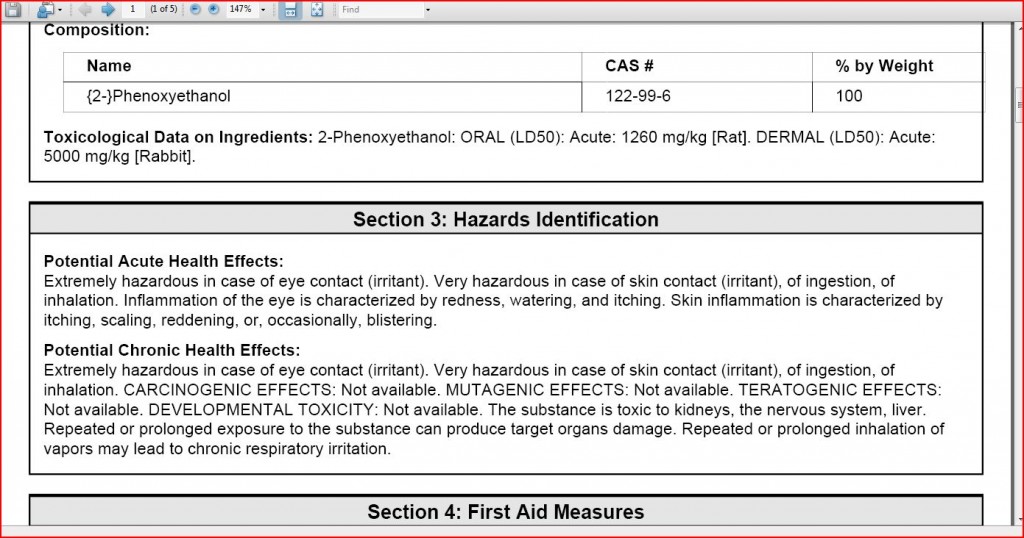 Guest post by Erin Demory, from ClearOrganics.com
Guest post by Erin Demory, from ClearOrganics.com
With the new year in full swing and a new season upon us, many people want to shed pounds, eliminate built-up environmental toxins, ditch unhealthy habits, and clear the mental fog that may be contributing to a sluggish body and out-of-sync feeling. Revitalizing and cleansing our bodies can be done through various types of detoxification processes. Detoxification is about resting, cleaning and nourishing the body from the inside out. By removing and eliminating toxins, then feeding your body with healthy nutrients, detoxification can help protect you from disease and renew your ability to maintain optimum health. Some of the benefits of a good detoxification plan are: improved organ function, healthier skin, increased energy, reduction in allergies, a kick-start to weight loss, and improved mental clarity. Our bodies already have a built in system in place for detoxing – through breathing, perspiration, urination, and bowel movements – however these days, most people are exposed to such excessive amounts of environmental pollutants, stress, and diets heavy in processed foods, that our bodies could really use some extra help.
Where to start? Many experts recommend that all of us detox at least once a year. Some people even find it beneficial to detox 2-4 times a year, for example, at the onset of a new season. But, with so many different plans, methods, and theories on detox out there, it can be overwhelming to know the best route for you. For example, plans can last anywhere from 3 – 30 days, they can be liquid only diets, fruit and veggie only, or elimination detox (commonly used for identifying allergens), and some plans include special supplements or herbs, colonics or laxatives. The majority of us have fast paced, busy schedules filled with family, work, extracurricular and community activities. If you are like me, you probably don’t want to make huge sacrifices and disruptive changes to be healthy, such as starvation diets, difficult meal plans, or regimens that require staying close to the house for several days (or close to the bathroom rather). The good news is that none of that is necessary to perform a healthy body detoxification. A simple super-clean eating plan that focuses on whole, clean foods can do wonders for your body, and it is absolutely possible to do it in just three days, such as over the weekend. If you can stretch it out over 5 days, you’ll be feeling even better results!
First, here are some good ground rules for any effective detox plan. Note: hopefully some of you are practicing these year-round already, and if you aren’t, maybe after introducing them via the detox you will chose to continue on with them – you really will feel so much better if you incorporate them into your lifestyle. 🙂
1. Lighten the toxic load on your body: Try eliminating caffeine, tobacco, refined sugars, saturated fats, and processed foods. All of these are obstacles to cleansing, healing, and feeling your best. Also, reduce or eliminate your exposure to chemical based household cleaners and personal care products which are laden with harmful toxins that can build up in your body and potentially create a burden to your organs and even long term damage. Instead, try making your own cleaners with simple, inexpensive, and effective ingredients such as vinegar, baking soda, lemon juice, and essential oils. Recipes are easily found on the internet. For your skin, hair and body, consider products that are completely free of harmful, synthetic chemicals and try to chose certified organic to the highest standard, such as those available through Miessence Certified Organics (please ask your personal Miessence Rep for more details). Not only will you be doing your body a favor, but also the earth!
2. Reduce the level of stress in your life: stress creates hormones which are released into your body, and in large amounts the hormones can be toxic. It is recommended that during a body detox period, we also detoxify ourselves of stressful life situations. Meditating, Yoga or other exercise for 1 hour a day, and a concentrated focus on positive thinking can help reduce stress. Very strenuous exercise should be avoided during detox.
3. Drink Water and Flush Toxins: Drink plenty of water – 64 oz or more a day will help to keep your body hydrated and assist in flushing out the extra toxins that are being kicked up. Some people also like to visit a sauna, practice hydrotherapy, or use detox foot baths to further assist their bodies with the drawing out the toxins.
4. Rest: During detox your body is working hard to eliminate those built-up toxins from your organs and tissues. So don’t be surprised if you feel a little drained and not at your best. Rest assured, you will soon! Help your body out during this time by allowing it plenty of rest.
Now for meal suggestions. As I said before, focusing on whole, natural, clean foods is the key. That means first and foremost staying away from processed! Additionally I would suggest choosing organic whenever possible, so as to ensure that you are not exposing your body to pesticides and GMO’s from conventional foods. Below are 3 or more options for each meal to take you through a 3 day plan:
1. Breakfast Options: steel cut oats topped with nuts and fresh berries; egg white omelet with fresh veggies inside; Greek yogurt topped with flax seeds and fresh fruit.
2. Snack Options (2x per day): fresh apple, orange or other fruit of choice; ½ cup yogurt topped with nuts and banana; slice of whole grain bread topped with butter of your choice (peanut, almond, sunflower, etc…); hard boiled egg; handful of baby carrots; ½ cup of raw nuts.
3. Lunch Options: Fresh baby spinach salad topped with grape tomatoes, red onions, nuts and a dressing consisting of lemon juice and olive oil (or flax seed oil if on hand); wild caught salmon or tuna fish (may opt for canned for ease/convenience) over dark greens with ½ cup garbanzo beans and lemon/oil dressing; whole grain bread or tortilla wrapped up with fresh avocado, dark greens, tomatoes, red onion and a tsp of Dijon mustard.
4. Dinner Options: Talapia (or your choice of healthy and sustainable fish from the smart seafood guide provided by the Food and Water Watch organization), seasoned with lemon and olive oil, served with brown rice and steamed broccoli; lean ground turkey burger topped with sauteed mushrooms and onions (if you feel you need bread, make sure it is whole grain) served with a large green salad with balsamic vinegar and olive/flax seed oil; boneless, skinless baked chicken breast with fresh lemon juice, 2 tsp olive oil and 1 tbsp of capers or green olives served with steamed greens such as spinach, kale or collards (if desired, add a little garlic,onion, and homemade veggie or chicken stock for flavoring greens).
In addition to following the above meal options, I would also suggest doubling your daily dosage of Miessence Superfoods during the detox period. After all, these supplements are simply certified organic, raw, vegan, and whole-food based supplements which are packed with important benefits to your body. They are both the perfect addition to a detox plan AND great for normal daily maintenance. If you have not yet tried the Miessence Superfoods, consider taking the 10 day Vitality Challenge (ask your Rep for details) which is a wonderful introduction to the Fermented Foods Probiotic, Alkalising Deep Green, and Berry Radical Antioxidant Superfoods.
Happy detoxing everyone – wishing you an abundance of good health and wellness!
